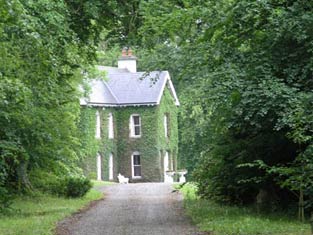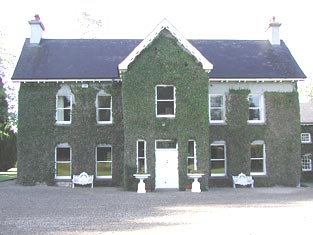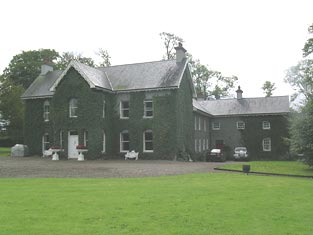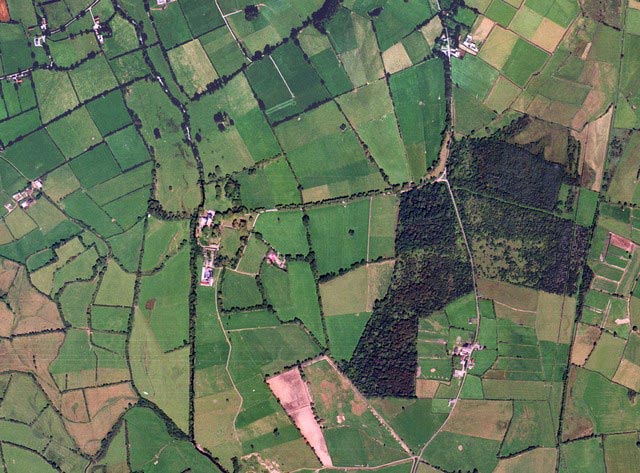


 |
 |
 |

Description
Detached five-bay two-storey house, built c. 1810, having projecting gable-fronted
entrance bay, and lower eighteenth-century L-plan two-storey block to rear,
with further two-bay two-storey additions to this block. Pitched artificial
slate roof with paired carved timber brackets to eaves, replacement decorative
bargeboards and having rendered chimneystacks, that to east gable projecting.
Rendered walls. Timber sash windows throughout in square-headed openings with
tooled limestone sills, having one-over-one pane to main block, six-over-six
pane and eight-over-four pane to L-plan addition. Variety of windows, including
six-over-six pane timber sash, to outer additions. Replacement timber door with
leaded overlight and one-over-one pane timber sash side-lights.
Appraisal
Moyaliff House is a large house, built over several periods. It is picturesquely
sited within a mature garden, beside a river, and within the grounds of a ruined
castle. Its modest garden front conceals the several distinct extensions to
the rear, forming enclosed courtyards. It contains fabric from the eighteenth
and nineteenth centuries.
The lowest wing of the house at one time adjoined the castle . The middle wing being added during early 17th century; While the third addition was probably completed early into the 1800’s. All the walls of the house are of exceptional thickness which accounts for the dryness inside. Behind a panel in the thickness of one of the outside walls is a passage on the first floor. This was a secret closet where a person could hide. In the courtyard there is a deep well, the former water supply; So that in case of attack water was available. To the south of the castle mound is the coach house. It has still the carriage displaying the family crest. In the house too are the uniforms of coach men, footmen and butlers of former times. The area around this fine manor house shows us the type of buildings connected with the Normans. It begins with a motte and bailey , then a castle, and then a manor house.
Armstrongs of Moyaliffe.
The Armstrongs acquired Moyaliffe (formerly Mealiffe) in the 1690s. When Thomas
Armstrong purchased Moyaliffe House it was apparently just a small stone house
built close to the foot of the old moate which still had the remnants of the
tumbled castle on top. Eventually the estate was bought by the Land Commission
in the 1950s and divided among local farmers. The house itself was sold by the
last of the family to live there in 1999.
The last of the Armstrongs belongings were removed. Three truckloads of their stuff went to South Africa where some of the Armstrongs now live.